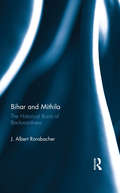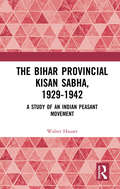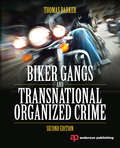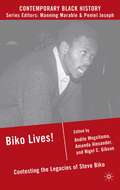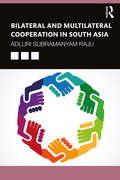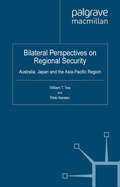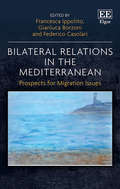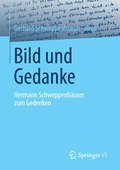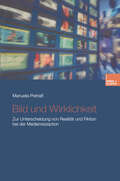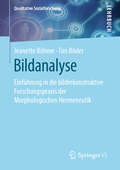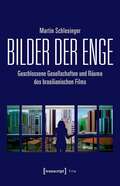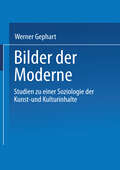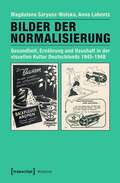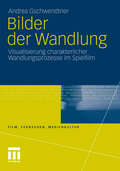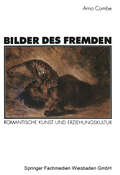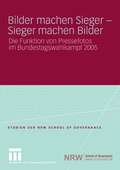- Table View
- List View
Bihar and Mithila: The Historical Roots of Backwardness
by J. Albert RorabacherThe world has become obsessed with the Western notions of progress, development, and globalization, the latter a form of human and economic homogenization. These processes, through the aegis of the United Nations, are comparatively monitored. Those nations deemed to be ‘lagging behind’ are then provided with foreign aid and developmental assistance. For nearly seventy years, India has sought its place in this global endeavour; yet, even today, abject poverty and backwardness can be observed in districts in almost every state; with the highest concentration of such districts found in the state of Bihar and a cultural enclave, known as Mithila. Development in India has been elusive because it is difficult to define; and because the Western concepts of development and progress have no absolute equivalents within many non-Western settings. As a consequence, development programmes often fail because they are unable to ask the right questions, but equally important is the political economy derived from foreign aid. For politicians, there is no long-term benefit to be derived from successful development. In general, foreign aid only serves to corrupt governments and politicians and, in the end, does very little for those who need help. The struggling states of Bihar and Mithila serve as extreme examples of India‘s problems. Development here has been thwarted by a hereditary landed aristocracy supported by religion, casteism, custom, social stratification, tradition, and patterns of behaviour that can be traced back millennia. In turn, all these have been masterfully manipulated by co-opted politicians, who have turned politics into a veritable art form as this volume comprehensively demonstrates.
Bihar and Mithila: The Historical Roots of Backwardness
by J. Albert RorabacherThe world has become obsessed with the Western notions of progress, development, and globalization, the latter a form of human and economic homogenization. These processes, through the aegis of the United Nations, are comparatively monitored. Those nations deemed to be ‘lagging behind’ are then provided with foreign aid and developmental assistance. For nearly seventy years, India has sought its place in this global endeavour; yet, even today, abject poverty and backwardness can be observed in districts in almost every state; with the highest concentration of such districts found in the state of Bihar and a cultural enclave, known as Mithila. Development in India has been elusive because it is difficult to define; and because the Western concepts of development and progress have no absolute equivalents within many non-Western settings. As a consequence, development programmes often fail because they are unable to ask the right questions, but equally important is the political economy derived from foreign aid. For politicians, there is no long-term benefit to be derived from successful development. In general, foreign aid only serves to corrupt governments and politicians and, in the end, does very little for those who need help. The struggling states of Bihar and Mithila serve as extreme examples of India‘s problems. Development here has been thwarted by a hereditary landed aristocracy supported by religion, casteism, custom, social stratification, tradition, and patterns of behaviour that can be traced back millennia. In turn, all these have been masterfully manipulated by co-opted politicians, who have turned politics into a veritable art form as this volume comprehensively demonstrates.
The Bihar Provincial Kisan Sabha, 1929-1942: A Study of an Indian Peasant Movement
by Walter HauserOn December 5th, 1920, in Patna, the Dasnami sannyasi Sahajanand Saraswati encountered Mahatma Gandhi for the first time. Sahajanand was already known in social-reform circles in Bihar as an energetic activist and educator working to promote Bhumihar Brahman identity. Inspired by the Mahatma’s radical reformulation of Indian nationalism, ‘the Swami’ (as Sahajanand would soon come to be known) threw himself into nationalist politics and the Indian National Congress. Within a decade, moved by the plight of tenant-farmers struggling against excessive rent demands and abusive landlord ‘exactions’, the Swami had spearheaded the formation of the Bihar Provincial Kisan Sabha. This organization quickly became the largest organization of its kind in India, catapulting the Swami onto the national stage. By the early mid-1930s the Swami had publicly broken with both the Mahatma and the ‘Gandhians’ and had made common cause with the left wing of the Congress. Later, as the storm clouds of World War II gathered on the horizon, he joined forces with the Forward Bloc and the Communist Party of India. By the time of his death in 1950, the Swami, disillusioned with politics, had dissociated himself from all parties.This pioneering 1961 study by Walter Hauser, tracks the history of the Bihar peasant movement as it both influenced and was buffeted by national and international politics. Hauser offers here a penetrating analysis of the character of the movement and the mind of its leader as he grappled with and gravitated toward Marxism-Leninism in the 1930s and 1940s. Initially written as a Ph.D. dissertation at the University of Chicago, Hauser’s path-breaking Bihar Provincial Kisan Sabha, 1929-1942 is now being published in its entirety for the first time. The volume includes a ‘Foreword’ by one of Hauser’s many students, William R. Pinch. Please note: Taylor & Francis does not sell or distribute the Hardback in India, Pakistan, Nepal, Bhutan, Bangladesh and Sri Lanka
The Bihar Provincial Kisan Sabha, 1929-1942: A Study of an Indian Peasant Movement
by Walter HauserOn December 5th, 1920, in Patna, the Dasnami sannyasi Sahajanand Saraswati encountered Mahatma Gandhi for the first time. Sahajanand was already known in social-reform circles in Bihar as an energetic activist and educator working to promote Bhumihar Brahman identity. Inspired by the Mahatma’s radical reformulation of Indian nationalism, ‘the Swami’ (as Sahajanand would soon come to be known) threw himself into nationalist politics and the Indian National Congress. Within a decade, moved by the plight of tenant-farmers struggling against excessive rent demands and abusive landlord ‘exactions’, the Swami had spearheaded the formation of the Bihar Provincial Kisan Sabha. This organization quickly became the largest organization of its kind in India, catapulting the Swami onto the national stage. By the early mid-1930s the Swami had publicly broken with both the Mahatma and the ‘Gandhians’ and had made common cause with the left wing of the Congress. Later, as the storm clouds of World War II gathered on the horizon, he joined forces with the Forward Bloc and the Communist Party of India. By the time of his death in 1950, the Swami, disillusioned with politics, had dissociated himself from all parties.This pioneering 1961 study by Walter Hauser, tracks the history of the Bihar peasant movement as it both influenced and was buffeted by national and international politics. Hauser offers here a penetrating analysis of the character of the movement and the mind of its leader as he grappled with and gravitated toward Marxism-Leninism in the 1930s and 1940s. Initially written as a Ph.D. dissertation at the University of Chicago, Hauser’s path-breaking Bihar Provincial Kisan Sabha, 1929-1942 is now being published in its entirety for the first time. The volume includes a ‘Foreword’ by one of Hauser’s many students, William R. Pinch. Please note: Taylor & Francis does not sell or distribute the Hardback in India, Pakistan, Nepal, Bhutan, Bangladesh and Sri Lanka
Biker Gangs and Transnational Organized Crime
by Thomas BarkerBiker Gangs and Transnational Organized Crime, Second Edition, describes and analyzes a rapidly expanding global problem: criminal acts committed by motorcycle gangs. Thomas Barker, one of the world’s top experts on outlaw biker gangs, offers fascinating details about the Bandidos, the Vagos, the Mongols, and other "one percenters" (criminal biker gangs, as opposed to the vast majority of motorcycle enthusiasts). He combines this data with a strengthened conceptual framework that makes sense of this complicated picture. U.S.-based motorcycle gangs like the Hells Angels have proliferated, especially in Canada and Europe, to the point where these gangs have more members in other countries than in the United States. Increasingly more often in recent years their crimes are not limited to rumbles or drug use—these gangs challenge the dominance of organized crime, leading to violent conflicts between the rivals. Germany, Scandinavia, the UK, the Netherlands, and Canada are particularly hard-hit by this rising violence. One of Barker’s unique contributions is his Criminal Organization Continuum, building on the groundbreaking network approach to organized crime proposed by Klaus von Lampe. Introduced in the first edition, Barker elaborates his continuum tool and makes it more multi-dimensional to help refine the definition of adult criminal gangs. The product of years of research, this book lays the groundwork for further study by offering students, police, and researchers the most thorough account available of outlaw motorcycle gangs.
Biker Gangs and Transnational Organized Crime
by Thomas BarkerBiker Gangs and Transnational Organized Crime, Second Edition, describes and analyzes a rapidly expanding global problem: criminal acts committed by motorcycle gangs. Thomas Barker, one of the world’s top experts on outlaw biker gangs, offers fascinating details about the Bandidos, the Vagos, the Mongols, and other "one percenters" (criminal biker gangs, as opposed to the vast majority of motorcycle enthusiasts). He combines this data with a strengthened conceptual framework that makes sense of this complicated picture. U.S.-based motorcycle gangs like the Hells Angels have proliferated, especially in Canada and Europe, to the point where these gangs have more members in other countries than in the United States. Increasingly more often in recent years their crimes are not limited to rumbles or drug use—these gangs challenge the dominance of organized crime, leading to violent conflicts between the rivals. Germany, Scandinavia, the UK, the Netherlands, and Canada are particularly hard-hit by this rising violence. One of Barker’s unique contributions is his Criminal Organization Continuum, building on the groundbreaking network approach to organized crime proposed by Klaus von Lampe. Introduced in the first edition, Barker elaborates his continuum tool and makes it more multi-dimensional to help refine the definition of adult criminal gangs. The product of years of research, this book lays the groundwork for further study by offering students, police, and researchers the most thorough account available of outlaw motorcycle gangs.
Biko Lives!: Contesting the Legacies of Steve Biko (Contemporary Black History)
by A. Mngxitama A. Alexander N. GibsonThis collection looks at the on-going significance of Black Consciousness, situating it in a global frame, examining the legacy of Steve Biko, the current state of post-apartheid South African politics, and the culture and history of the anti-apartheid movements.
Bilanz mit Aussichten: Die neue IG Metall an der Schwelle zum 21. Jahrhundert
by Hans O. HemmerDie deutsche Gewerkschaftslandschaft verändert sich zur Zeit nachhaltiger und umfassender als je in ihrer bisher hundertfünfzigjährigen Geschichte. Der Zusammenschluß von IG Metall, Gewerkschaft Holz und Kunststoff sowie Gewerkschaft Textil-Bekleidung wird zum Anlaß genommen, Aspekte der Erfolgsgeschichte der Gewerkschaften ab 1949 zu beleuchten.
Bilateral and Multilateral Cooperation in South Asia
by Adluri Subramanyam RajuThis book examines how bilateralism and multilateralism serve as cornerstones in bringing countries together to enhance regional cooperation. It explores the unfolding dynamics of bilateral and multilateral relationships in South Asia and looks at how factors like the absence of shared identities or common threats from external sources, a lack of trust, and suspicion are manifesting as obstacles for regional cooperation. With case studies from various constituent countries, the volume studies themes such as economic cooperation in South Asia, connections through sub-regional initiatives, migration and refugee problems in the region, SAARC and terrorism, the Pashtun factor in Afghanistan–Pakistan relations, India’s interests in ASEAN and BIMSTEC, the nuclear dynamics of India–Pakistan relations, India–Bangladesh connectivity issues, Sri Lanka as a troubled island nation, and Afghanistan’s relations with the Kashmir Valley. It discusses the implications of these long-standing issues that have stood as impediments to regional cooperation and bringing new perspectives to enable greater understanding and probable solutions. A comprehensive and accessible volume, it will be useful for scholars and researchers of international relations, international trade, South Asian studies, SAARC, regional development, international and multilateral trade, political studies, geo-politics, strategic and defence studies, and peace and conflict resolution.
Bilateral and Multilateral Cooperation in South Asia
by Adluri Subramanyam RajuThis book examines how bilateralism and multilateralism serve as cornerstones in bringing countries together to enhance regional cooperation. It explores the unfolding dynamics of bilateral and multilateral relationships in South Asia and looks at how factors like the absence of shared identities or common threats from external sources, a lack of trust, and suspicion are manifesting as obstacles for regional cooperation. With case studies from various constituent countries, the volume studies themes such as economic cooperation in South Asia, connections through sub-regional initiatives, migration and refugee problems in the region, SAARC and terrorism, the Pashtun factor in Afghanistan–Pakistan relations, India’s interests in ASEAN and BIMSTEC, the nuclear dynamics of India–Pakistan relations, India–Bangladesh connectivity issues, Sri Lanka as a troubled island nation, and Afghanistan’s relations with the Kashmir Valley. It discusses the implications of these long-standing issues that have stood as impediments to regional cooperation and bringing new perspectives to enable greater understanding and probable solutions. A comprehensive and accessible volume, it will be useful for scholars and researchers of international relations, international trade, South Asian studies, SAARC, regional development, international and multilateral trade, political studies, geo-politics, strategic and defence studies, and peace and conflict resolution.
Bilateral Perspectives on Regional Security: Australia, Japan and the Asia-Pacific Region (Critical Studies of the Asia-Pacific)
by William T. Tow Rikki KerstenThis book assesses the key factors underlying such Australian-Japanese cooperation and those policy challenges that could impede it. Experts offer critical insights into why their two countries – traditionally the two key 'spokes' in the US bilateral alliance network spanning Asia – are moving toward a security relationship in their own right.
Bilateral Relations in the Mediterranean: Prospects for Migration Issues
This timely book assesses national and supranational bilateral approaches to dealing with the rising tide of migration into the European Union via the Mediterranean Sea. International law and EU migration law specialists critically assess the legal tools adopted to engage with the ‘refugee crisis’. While the EU works to develop a unified approach to Mediterranean transit and origin countries, the authors argue that a crucial role should be accorded to individual states in finding a solution to this complex and sensitive situation. Historical and political factors playing into migration strategies are discussed, and the legal framework underpinning the bilateral and regional schemes on which the northern and southern shores of the Mediterranean seek to cooperate on migration is also examined. Migration-related issues, such as search and rescue at sea, human rights and policing are explored throughout the book. Comparing the bilateral arrangements Southern EU Member States have made with the Mediterranean countries of origin and the regional bilateralism conducted by the EU, expert authors assess how best to achieve a coherent model. This will be an essential read for academics and scholars in international and European migration law, environmental politics and policy; practitioners and policymakers working on migration issues, and NGOs.
Bild: Ein interdisziplinäres Handbuch
Vom Tafelbild über den Film bis zum 3D-Bild. Bilder überfluten uns in allen Bereichen der Gesellschaft, der Umgang mit digitalen Bildern wird immer wichtiger. Seit dem Pictorial oder Iconic Turn haben sich auch die Kulturwissenschaften des Themas angenommen und eine Wissenschaft vom Bild und der Bildwahrnehmung begründet. Das Handbuch gibt erstmals einen umfassenden Überblick, erläutert Grundlagen wie Semiotik, Phänomenologie und Ikonologie, analysiert verschiedene Einzelmedien und sich anschließende Bilddiskurse. Ein abschließender Teil beleuchtet die Bildtheorien verschiedener Disziplinen, und wie sich diese als Bildwissenschaft verstehen.
Bild - Macht - Gender: Blicke, Bilder und Geschlechterrollen in der höfischen Epik
by Ines PalauDie Untersuchung von Geschlechterbildern in der mittelalterlichen Literatur hat uns heute noch etwas zu sagen. Der Blick auf Geschlechterrollen der damaligen Zeit kann eine aktive Rolle bei der Aushandlung von Geschlechterverhältnissen in der Gegenwart spielen: Wertehierarchien, Identitätskonzepte und Handlungsnormen werden zumeist im Rückgriff auf die Vergangenheit festgelegt und legitimiert. Die Anbindung an tradierte Geschlechterformen ist ein wichtiger Baustein bei der Konstruktion von Geschlechterrollen. Mit dem Argument `So ist es doch schon immer gewesen' wird die Festlegung von Geschlechterrollen am machtvollsten fundiert. In Zeiten, in denen das Gender-Mainstreaming zum offiziellen Ziel der Europäischen Union erklärt, Geschlechtergleichstellung gleichsam ,verordnet' wird und demographische Untergangsszenarien entworfen werden, kann diese Arbeit einen Beitrag dazu leisten, ein gender-sensibles Bewusstsein zu schärfen, die heutigen Veränderungen der Geschlechterkategorien zu historisieren und den Prozess in eine konstruktive Richtung ,mitzusteuern'.
Bild und Gedanke: Hermann Schweppenhäuser zum Gedenken
by Gerhard SchweppenhäuserDie Beiträge des Bandes loten Tiefe und Wirkung der Schriften des Philosophen Hermann Schweppenhäuser aus. Schweppenhäuser (1928-2015) gehörte zum engsten Kreis um Adorno und Horkheimer, führte die kritische Theorie als dialektische Philosophie weiter und verband sie mit dem Denkstil Walter Benjamins, dessen Schriften er mit Rolf Tiedemann herausgegeben hat. Schweppenhäuser hinterlässt ein vielfältiges philosophisches und schriftstellerisches Werk: Abhandlungen, Essays, Aphorismen und Handbuchartikel, lyrische Formen und kurze Prosa. Die Autorinnen und Autoren geben in diesem Gedenkbuch Resonanz davon, wie sich ihnen die Vielfalt von Schweppenhäusers Denken und Schaffen gezeigt hat; teils in biografischer, teils in thematischer Hinsicht. Dazu kommen unveröffentlichte Texte aus dem Nachlass.„In der Zeitrechnung der kritischen Theorie endete mit Schweppenhäusers Tod eine Ära.“ Christoph Türcke
Bild und Wirklichkeit: Zur Unterscheidung von Realität und Fiktion bei der Medienrezeption
by Manuela PietraßNeue Programmformate und Vermittlungstechnologien führen zu einer wachsenden Vielfalt von Medienwirklichkeiten zwischen Realität und Fiktion. Die Autorin untersucht die Rolle von Bildern als Bedeutungsträger und beschreibt deren Einfluss auf die Wahrnehmung von Realität. Aufgrund seiner Realitätsnähe spielt das Bild eine besondere Rolle. Welchen Einfluss haben mehr oder weniger realistische Gestaltungsformen auf die Zuordnung von Medienwirklichkeiten? Gibt es Unterschiede bei der Rezeption von realen und fiktionalen Bildern? Unter Einbezug der Rahmen-Analyse von E. Goffman und semiotischer Ansätze wird im Buch ein theoretischer Beitrag sowohl zur Bildrezeption wie zur Bedeutungsvermittlung des Bildes geleistet. Die auf dieser Basis empirisch erhobenen "Rahmungsprofile" zeigen die Rezipientenaktivitäten in Zusammenhang mit den bildlichen Inhalten und Darstellungsformen auf.
Bildanalyse: Einführung in die bildrekonstruktive Forschungspraxis der Morphologischen Hermeneutik (Qualitative Sozialforschung)
by Jeanette Böhme Tim BöderDer Methodenband führt leicht verständlich in das bildrekonstruktive Verfahren der Morphologischen Hermeneutik ein. Systematisch wird das Verfahren der Bildanalyse von der theoretischen Begründung bis zur methodischen Umsetzung vorgestellt. An Fallbeispielen wird dann das forschungspraktische Vorgehen Schritt für Schritt veranschaulicht. Abschließend wird das Erkenntnispotenzial von Bildern für die qualitative Sozialforschung pointiert diskutiert.
Bilder der Enge: Geschlossene Gesellschaften und Räume des brasilianischen Films (Film)
by Martin SchlesingerIn Brasiliens filmischer Kultur haben sich, wie in keiner anderen, Bilder der Enge ausgebildet. Doch der Begriff der »filmischen Enge« taucht bislang weder in der nationalen noch in der internationalen Filmwissenschaft auf. Anhand von close readings zeitgenössischer Filme verschiedener Genres und Gattungen - von Regisseuren wie Fernando Meirelles oder Kleber Mendonça Filho - macht Martin Schlesinger die Enge als ästhetisches wie filmphilosophisches Phänomen nun greifbar. Dabei entwickelt er einen neuartigen Blick auf ein Brasilien der Bilder, dessen Reichweite über das Land und über den Film hinaus Relevanz entfaltet.
Bilder der Moderne: Studien zu einer Soziologie der Kunst- und Kulturinhalte (Spähren der Moderne #1)
by Werner GephartDie Gesellschaft ist im Bilde. Ästhetische Erfahrung und soziologische Hermeneutik In den Anfangsgründen der Gesellschaftstheorie nimmt nicht die Kunst, sondern das Recht einen prominenten Platz ein. Gerade weil sich Soziologie um das Problem sozialer Ordnung zentriert und organisiert, gerinnt eine Gesellschaftstheorie, die den primären Integrationsmodus von Recht postuliert, zu einer mehr oder minder impliziten Rechtsanalyse. Dies habe ich in »Gesellschaftstheorie 1 und Recht« insbesondere anhand der Theoriebeiträge von Marx, Durkheim und Weber im Detail nachzuzeichnen versucht. In Fortführung einer Suche nach den juridischen Ursprüngen des soziologischen Denkens möchte ich nunmehr untersuchen, welchen systematischen Stellenwert Kunst und Alltagsästhetik in den Entwürfen zum Verständnis der Moderne einnimmt. Neben Georg Simmel ist Emile Durkheim besonders aufschlußreich. Ver schließt seine Kritik des Ästhetizismus der Soziologie den Zugang zu ästhetischen Phänomenen oder liefert gerade der juridisch und religionssoziologisch argumentierende Durkheim ein Instrument, der Kunst einen deutlichen Platz in der Gesellschaftstheorie anzu weisen? Auch in Webers Bild des okzidentalen Rationalismus sind der Stellenwert der Kunst und die Bedeutung der Ästhetik für das All tagshandeln unterbelichtet Schließlich ist Webers Projekt einer So ziologie der Kultur-und Kunstinhalte nicht mehr zur Ausführung ge langt. Aber lohnt es nicht vielleicht, angesichts einer theoretischen Vgl. Gephart, Wemer: Gesellschaftstheorie und Recht. Das Recht im soziolo gischen Diskurs der Modeme. Frankfurt am Main 1993.
Bilder der Normalisierung: Gesundheit, Ernährung und Haushalt in der visuellen Kultur Deutschlands 1945-1948 (Histoire #101)
by Magdalena Saryusz-Wolska Anna LabentzIn keinem anderen Abschnitt der deutschen Nachkriegszeit wurden Vorstellungen von Gesellschaftsstrukturen so intensiv auf visueller Ebene verhandelt wie in den Jahren 1945-1948. Insbesondere Bilder zu Themen wie Hygiene und Gesundheit, Ernährung und Hausarbeit fungierten als Projektionsfläche für den Übergang von Mangel- und Ausnahmeerscheinungen hin zu einem »normalen« Gesellschaftsleben und zu traditionellen Geschlechterrollen. Wie Magdalena Saryusz-Wolska und Anna Labentz zeigen, lässt sich anhand von öffentlich zugänglichen Bildern aus Illustrierten, Frauenzeitschriften, Werbung, Ausstellungen, Propagandaplakaten und exemplarischen Filmen der facettenreiche, oft widersprüchliche Prozess der Rückkehr zur Normalität nachvollziehen.
Bilder der Wandlung: Visualisierung charakterlicher Wandlungsprozesse im Spielfilm (Film, Fernsehen, Medienkultur)
by Andrea GschwendtnerIn diesem Band werden acht Spielfilme untersucht, deren Hauptfiguren in kurzer Zeit, d.h. über wenige Wochen bis zu eineinhalb Jahren, einen grundlegenden charakterlichen Wandlungsprozess erleben. Es wird eine Palette typologischer, filmischer Gestaltungsmittel herausgearbeitet, die als Visualisierungsmuster für Prozesse des Scheiterns und der Reifung eingesetzt werden. Spezifische Gestaltungsweisen von z.B. Kostüm, Schauplätzen und Blickweisen der Kamera, aber auch in der narrativen Konstruktion, der Wissensgabe und Zeitdarstellung zählen zu den typologisierbaren Visualisierungselementen für charakterliche Wandlungsprozesse. Die zentralen Erkenntnisse dieser Studie eröffnen innovative Perspektiven auf filmische Gestaltung - sowohl für die Filmpraxis (Drehbuchautoren, Regisseure, Kameraleute, Szenografen, Produzenten u.a.) als auch für die Film- und Medienwissenschaft.
Bilder des Fremden: Romantische Kunst und Erziehungskultur Zur Genese der Struktureigenschaften künstlerischen und pädagogischen Handelns
by Arno CombeDie romantische Kunst entdeckt das Fremde. Dieser Schock der Fremdheit zur Welt sollte nicht vorschnell versöhnt werden. Werkanalysen aus Musik und Lyrik verdeutlichen, daß der im künstlerischen Handeln verkörperte Erfahrungsbegriff - der Erfahrungserweiterung in noch fremde und unbekannte Bereiche und Bezirke - jenen romantischen Impuls darstellt, der in der ganzen westlichen Zivilisation tief nachwirkte und nachwirkt.Jene bestürzende und zur Zukunft hin offene Potentialität des Menschen, die die romantische Kunst inmitten aller gesellschaftlichen Determination - durch die sinnliche Konkretion von Erfahrungskrisen - immer wieder neu freilegte, war auch für die Schul- und Reformpädagogik bis heute von besonderer Anziehungskraft. Aber kann die Kunst als Paradigma für das pädagogische Handeln dienen? Die hier ins Spiel gebrachten hermeneutischen Fallrekonstruktionen aus der Sozialgeschichte der Schule und des Unterrichts verstehen sich auch als Beitrag zur Entzauberung einer pseudowissenschaftlichen Rationalisierung, die das schulische Lehren und Lernen inzwischen eher verstört hat, als reflektiertes und kreatives Handeln zu ermöglichen. Dennoch weisen genauere Analysen auf lange verschüttete "charismatische Ursprünge" pädagogischen Handelns zurück.
Bilder des Fremden: Visuelle Fremd- und Selbstkonstruktionen von Migrant*innen in der BRD (1960-1982) (Edition Kulturwissenschaft #247)
by Claudia Valeska CzychollErstmals werden mit diesem Buch visuelle Darstellungen von Migrant*innen im Kontext der Arbeitsmigration in der Bundesrepublik Deutschland anhand von Presse- und Privatfotografien untersucht. Für den Zeitraum von 1960 bis 1982 analysiert Claudia Valeska Czycholl in Spiegel und Stern kursierende Fremdbilder von Migrant*innen. Sie zeichnet diskursive Verläufe nach, fokussiert zentrale Stadien und Themen und identifiziert dominante Repräsentationsmuster. Zudem hinterfragt sie mittels fotografischer Selbstkonstruktionen von Migrant*innen diese hegemonialen Darstellungsweisen und hierarchisierenden Erzählungen von ›Uns‹ und ›Ihnen‹, von ›Wir‹ und den ›Anderen‹. Die Studie gibt so Einblick in tradierte Differenzkonstruktionen und stereotype Vorstellungen und liefert Materialien sowie theoretisch-methodische Ansätze, um sie zu hinterfragen.
Bilder machen Sieger - Sieger machen Bilder: Die Funktion von Pressefotos im Bundestagswahlkampf 2005 (Studien der NRW School of Governance)
by Moritz BallensiefenMachen sich Journalisten selbst zu Wahlkampfhelfern? Kommentieren Sie mit ihrer Bilderauswahl das politische Geschehen anstatt zu informieren? Tageszeitungen haben längst auf die veränderte Informationsaufnahme ihrer Leser reagiert. Ohne Visualisierung keine Nachricht. Daraus hat sich eine journalistische Jagd auf möglichst spektakuläre und exklusive Bildmotive entwickelt. Moritz Ballensiefen geht im Medienwahlkampf 2005 inhaltsanalytisch auf Spurensuche nach journalistischen Darstellungsmustern.
Bilder und Vorstellungen von Kindern und Kindheiten im medialen Diskurs: Die öffentliche Debatte um Social Freezing (Kasseler Edition Soziale Arbeit #28)
by Desirée RoosinghDas Erkenntnisinteresse dieser Arbeit liegt darin, die im öffentlichen Diskurs um Social Freezing hervorgebrachten Konstrukte von Kindern und Kindheiten sowie die diskursive Herstellung des generationalen Arrangements herauszuarbeiten und einer Reflexion zugänglich zu machen. Im ersten Teil stehen theoretische und empirische Bezüge sozialwissenschaftlicher Kindheitsforschung im Fokus. Im zweiten Teil werden die methodologischen Grundlagen und das empirische Vorgehen entfaltet. Das Forschungsprogramm der Wissenssoziologischen Diskursanalyse (WDA) wird erläutert und das Forschungsdesign entworfen. Die Darstellung der empirischen Analysen erfolgt im dritten und vierten Teil. Zum einen wird die Figur des antizipierten Kindes herausgearbeitet und Ungeborene als Gegenstand der Kindheitsforschung skizziert. Zum anderen wird mit dem Konzept des generationalen Ordnens im medialen Diskurs um Social Freezing die Konstruktion einer behüteten Familienkindheit im (akademischen) Elternhaus und der diskursive Entwurf einer generationalen Ordnung als Mutter-Kind-Dyade sichtbar.
